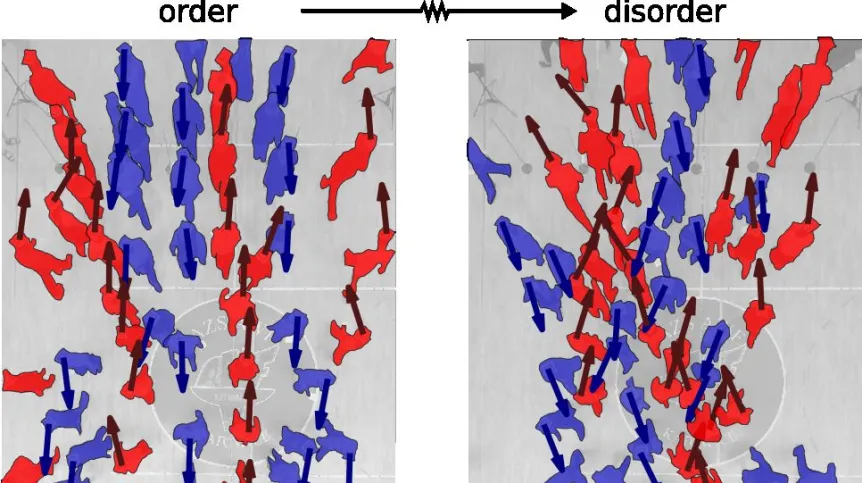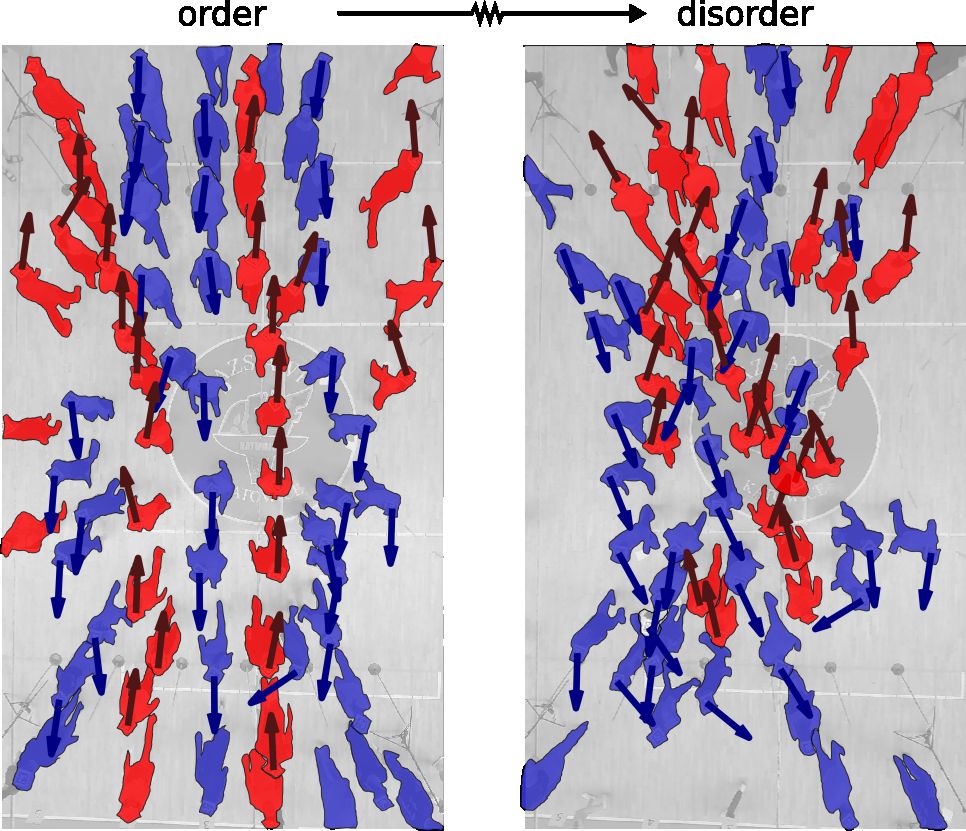
The principles of the emergence of order and chaos in the flow movement of pedestrians going in different directions have been described by an interdisciplinary team of scientists in a publication in PNAS. If the dispersion of the path of pedestrians' movement exceeds 13 degrees, the movement ceases to be fluid, and congestions arise in place of orderly paths.
'Flowing with the crowd is easy. However, when we want to deviate from the beaten path, problems begin - not only for us, but also for the people around us. Especially if we want to go across everyone else', summarises the co-author of the study, Professor Grzegorz Sobota from the Academy of Physical Education in Katowice.
Street lanes, underpasses, city squares, stadiums - these are spaces where masses of people going in different directions meet. Every person has their own destination, but to reach it, they must - usually without using words or gestures - find their way through the crowd, avoiding collisions.
It turns out that if pedestrians walk straight ahead, collisions can be avoided quite easily, and order quickly emerges from the flow of pedestrians - traffic paths form spontaneously, allowing pedestrians to walk one after another and pass each other without problems.
However, if pedestrians start crossing a given area diagonally and their paths intersect at many different angles - the flow ceases to be fluid and congestions occur. The mathematical principles describing the flow of pedestrians were described by Karol Bacik, PhD, from MIT together with Professor Tim Rogers from the University of Bath and professors of the Academy of Physical Education in Katowice - Grzegorz Sobota and Bogdan Bacik in the paper published in the prestigious journal "PNAS".
'Crowd flow can be orderly, disorderly, and congestions can emerge and disappear. We calculated when and how orderly movement transitions to a disorderly one. This is the first experimental confirmation of the model, which shows the occurrence of a critical point', comments the leader of the study, Karol Bacik from MIT.
As part of the experiment, five gates were placed on both sides of the gym. Each participant received instructions on which gate to start from and which one to reach. The researchers checked how smoothly the movement would flow if more and more paths crossed at unusual angles. For example, people from one corner of the gym were to go to the gate diagonally, while others went to the gates straight ahead of them.
The researchers found that the critical point was when the dispersion of directions was 13 degrees. This means that pedestrians did not walk perpendicularly to the edge of the street - along the shortest possible path, but chose a diagonal path and at different angles, meaning that people from opposite sides had to pass each other in unexpected ways. In these scenarios, the speed of crossing to the other side decreased by as much as 30 percent. Until now, this was not obvious.
Crowd movement simulations are already used when designing of large facilities and public spaces. However, thanks to the new work, not only a simpler but also more accurate description of such behaviour was created; it can now be used to prepare better simulations. They will allow to predict whether the flow will be orderly or not. And whether, for example, introducing or eliminating barriers or restrictions in movement will help to improve the flow or make it more difficult.
Perhaps wide pedestrian crossings designed to speed up the flow - which are just begging to walk diagonally to your destination - do not always fulfil their function well? Similarly intersections, where car traffic is stopped so that pedestrians can cross in any direction diagonally. All of this can now be calculated more effectively.
People - unlike, for example, molecules that make up fluids - are different from each other, have psychological states, and can make conscious decisions. 'The next stage of research will be to prepare a more accurate model that will better show the role of individuality in crowds. Because the current data already shows that not everyone behaves the same way in a crowd', Sobota comments.

'To look for great science and research topics that no one has ever described, you don't have to reach for the stars', smiles Karol Bacik. Sometimes it is enough to look out the window to find a topic that still holds many secrets.
Ludwika Tomala (PAP)
lt/ bar/













